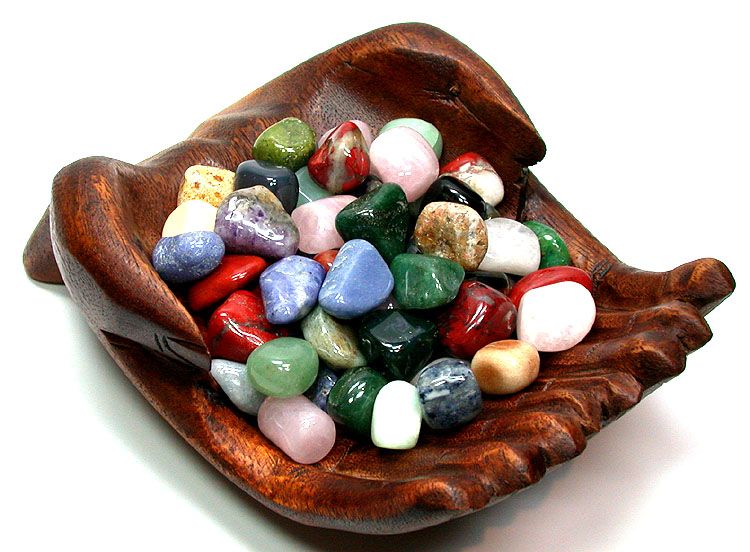5 Foods As Addictive As Cocaine
- Details
- Written by AndEl
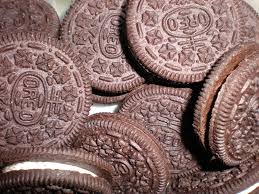
Just looking at a photo of a stack of cookies or freshly baked bread can make your mouth water. Research says simplyseeingtempting food releases the chemical dopamine in the brain. The neurotransmitter, often referred to as the “happy hormone,” helps control the brain's reward and pleasure centers. When you indulge, dopamine levels spike, causing you to crave more, and more. Next you thing you know, that box of Oreos is empty.
The problem is exacerbated because over-indulgence in foods high in fat, sugar and salt begins to shift your brain’s hedonic set point. Let’s take a look at our ancestors’ eating habits for reference. Sugar was a treat found in fruit and honey. Salt was eaten in foods that naturally contain sodium. Fat was consumed in hunted meat or foraged nuts. Food was earned; it was sustenance; and it brought happiness, too.
Today these simple foods can seem less desirable, overshadowed by processed desserts and snacks that actually cause symptoms of addiction equal to that produced by drugs like morphine and cocaine. When we overeat foods like ice cream on a regular basis, foods that used to trigger reward signals in the brain no longer activate.
Women, especially, are at high risk of addiction. "Women tend to restrict and then binge," Ashley Gearhardt, PhD, assistant professor in the psychology department at the University of Michigan, told Prevention. "That seems to sensitize the brain's developing an addictive process and for you to have a psychologically unhealthy relationship with the substance." Gearhardt is a co-creator of Yale University's Food Addiction Scale, which places many of today’s processed foods in the same category as drugs of abuse.
Beware the foods of a dangerous trifecta: fat, sugar and salt. Take a March 2010 study of rats, for example. Given unlimited access to unhealthy foods like candy and fast food, they began compulsively eating—even when they were given an electric shock to their feet after they exceeded their daily quota.
Indian Country Today Media Network rounds up the most addictive foods that should only be consumed in moderation—but is moderation even possible?
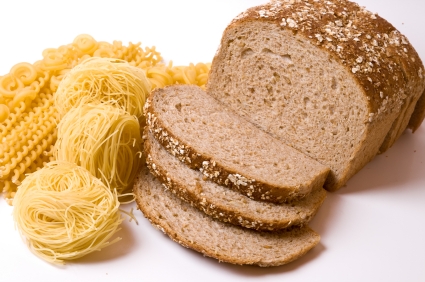
5. Bread and Pasta
Brain imaging reveals that after eating highly processed carbohydrates like white bread, pasta, rice, baked goods and other starches, the same pleasure centers of the brain light up as when a person takes drugs such as cocaine and heroin,The New York Times reports. In both cases, dopamine levels, which trigger happiness and feelings of reward, spike and then deplete, thus fueling addiction.
When a strong pasta craving kicks in, try a healthy substitute, like high-quality spelt pasta, cookedal denteto lower its glycemic content, suggests Andrew Weil, MD, founder and director of the Arizona Center for Integrative Medicine at the University of Arizona in his cookbookTrue Food.
4. Salty Snacks
A team of Duke University Medical Center and Australian scientists has found that addictive drugs affect the same nerve cells in the brain as salt. Both cocaine and salt create a strong reward sensation, which can be linked to behavioral conditioning. That feeling makes us want to repeat what led to the dopamine release, reported ScienceDaily.com.
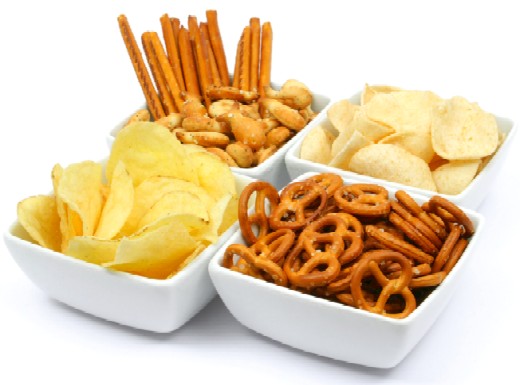
Over-ingesting of salt causes the kidneys to dump the excess sodium through the urine. But when the kidneys fail to keep up, the excess salt is stored in the cells. For chronic salt abusers, kidneys may never catch up, resulting in potassium deficiency, water retention, high blood pressure and even congestive heart failure, Prevention reported.
“Having a diet high in salt makes you more prone to having high blood pressure,” which is a major cause of heart disease and stroke, Jean Charles-Azure, Lummi, a registered dietician and public health nutritionist at the Indian Health Service’s national headquarters in Washington, D.C., told Indian Country Today Media Network.
Reducing sodium intake can prove challenging. Oftentimes people do not realize how much sodium certain foods contain. "People can choose how much salt to add to their food at the table. They can't take it out once it's there," Frieden said.
Health officials say most Americans consume excess salt primarily from processed and restaurant foods—not from the salt shaker. "It's possible to eat a whole bunch of sodium without it seeming salty," John Hayes, an assistant professor of food science at Penn State, who was not involved in the report, told the AP.
While a person should consume no more than 2,300 milligrams of sodium a day—roughly a teaspoon of salt—the average sodium consumption in the U.S. is around 3,300 milligrams, a recent Centers for Disease Control and Prevention study found. Those with high blood pressure or other health conditions should eat even less. Nine out of 10 Americans surpass the teaspoon guideline, states the highlights from the report.
As a substitute to salty crackers, try baking homemade kale chips with a touch of sea salt,Preventionmagazine suggests.
3. Fatty Foods
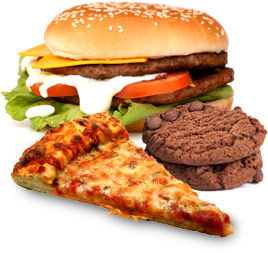
Not surprisingly, when lab rats are given access to fatty foods, they gorge themselves until they become obese. But the wiring in their brains also changes. These rats eventually develop a tolerance to the pleasure the fatty foods provide, and thus have to consume more to experience a high.
Our ancestors enjoyed fatty meat, but today we fry our wings, we braise our pork rinds in sugar and oil. And to top it off, some restaurants offer these foods all-you-can-eat.
“Humans used to have to search for food,” says Baylor College of Medicine researcher Dr. Ken Goodrick. “Now food searches us out.”
2. Chocolate
The cacao plant is thought to have originated in the Amazon about 300 B.C. Mayan culture called it “xocoatl,” or “god’s food,” for it symbolized life and fertility, and many of their carvings depicted cocoa pods. The Mayan enjoyed beverages of cacao beans crushed and mixed with liquid.
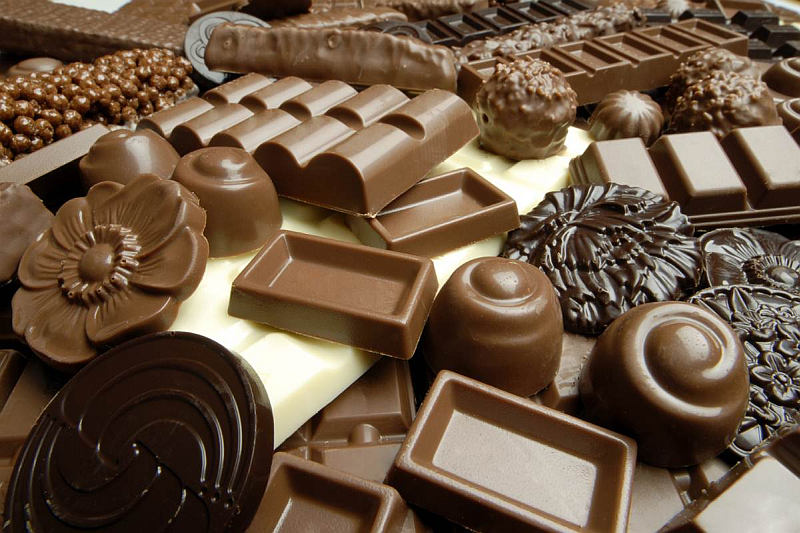
Similarly, the Aztecs believed their god, Quetzalcoatl, brought the cacao plant to them. They used spices, chili peppers and corn meal as sweeteners.
Researchers have also linked ancient chocolate consumption with traditional dishes eaten today such as mole, a chocolate-based sauce made with chili peppers and served with meat.
Our ancestors’ enjoyed cocoa in its natural state. Today, we are a nation of “chocoholics,” because we pack it with sugar and fat that provokes serotonin in the brain. Serotonin is related to emotions, social behavior and even sexual desire. A 1997 study published in theInternational Journal of Psychophysiologyfound that self-identified chocoholics experienced physical, behavioral, and emotional responses to chocolate that mirrored those of drug addicts.
Don’t be fooled into thinking dark chocolate is healthy—unless you’re consuming the no-sugar-added kind, or pure cocoa. Nearly all commercially sold chocolate is loaded with oil, fat, milk solids and sugar.
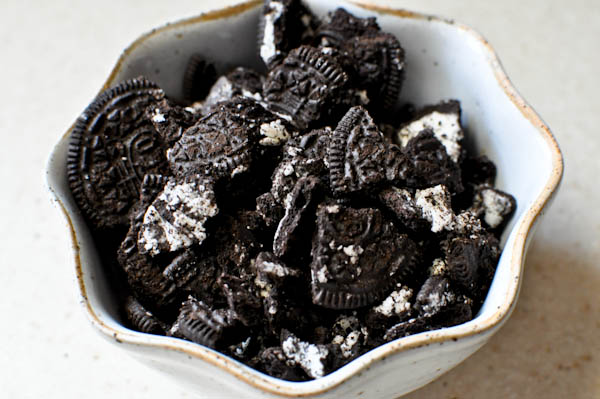
1. Sugar—and Particularly Oreos, according to a recent study
According to a recent study by students at Connecticut College, rats undergo higher trips on Oreo filling than on cocaine or morphine.
Researchers measured the reactions in the rats’ brains and found that "Oreos activated significantly more neurons" than cocaine.
"This correlated well with our behavioral results and lends support to the hypothesis that high-fat/high-sugar foods are addictive,” Joseph Schroeder, associate professor of psychology at Connecticut College, said.
Sugar addiction is already hard-wired into humans. Humans are capable of producing small amounts of morphine in our bodies, released through breast milk, believed to help a baby bond with its mother. Breast milk is already sweet, so babies associate sugar with nurture and satisfaction.
“We are biologically wired to crave these foods and eat as much of them as possible,” says Dr. Mark Hyman.
The problem is, now sugar is available in higher quantities and nearly everywhere we turn.
When we over-indulge in sugar, it enters the bloodstream, which then causes the pancreas to release insulin, which then converts this sugar into energy, or a "sugar high." Increases in insulin lead to fat storage, so we become obese.
A Princeton University study that measured the effects of sugar withdrawal in rats noted the rodents showed symptoms of anxiety as well as chattering teeth and the shakes.

Source Here
Liked this article? Dive deeper into personal growth and wellness! Check out CrystalWind.ca for spiritual wisdom or explore AromaWorx.ca for natural well-being tips. Spread the positivity—share this with friends on their happiness journey!
Let’s Chat! Drop Your Thoughts Below! ![]()
Disclaimer Health
All post and information provided within this blog is for educational and informational purposes only, and is not to be construed as medical advice or instruction. No action should be taken solely on the contents of this website. Please consult with your healthcare professional before making any dietary or lifestyle changes or taking supplements that may interfere with medications. Any products or information discussed are not intended to diagnose, prevent, treat or cure any illness, disease or lifestyle. Please consult your physician or a qualified health professional on any matters regarding your health and wellbeing or on any opinions expressed within this website.
Latest Articles

Imagine a world of inspiration and healing, free for all—made possible by YOU!
Donate Now—Ignite the Magic at CrystalWind.ca!

Epilepsy - Finding A Cure
Your donation can make a difference!
Help us find a cure – donate now!
Unlock Your Light: Join Lightworkers Worldwide on CrystalWind.ca!
Follow Us!
Featured This Month
Peridot: The Healer's Stone
Peridot has been used as a Power Stone for centuries. Peridot fosters emotio... Read more
Virgo Mythology
The Virgo Myth In all of constellation mythology, few legends are as misund... Read more
Crystals for Virgo
As the warmth of summer begins to soften into the crispness of autumn, the Sun... Read more
Sun in Virgo
An Overview of Sun Sign Characteristics for Virgo Virgo is guided by Mercur... Read more
Mabon Magic: Ideas For Fall Decoration And R…
Welcome (almost!) to Fall! We’re turning the Great Wheel once again, toward ... Read more
Mabon in Modern Times: Fresh Takes on the Au…
The Mabon season begins somewhere around the 21st-22nd of September and cont... Read more
Sweet Violet
Sweet Violet Faithfulness and modesty. “I will always be true to you.” Helps... Read more
Watermelon Tourmaline
Synonym: Rainbow Tourmaline The watermelon tourmaline is a rare variety t... Read more
The Vine: September 2nd - September 29th
The Autumnal Equinox ( Alban Elfed ) Celtic Symbol : The White Swan Read more






















































































































